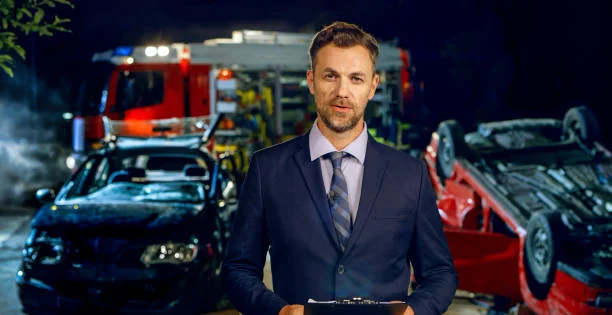T-bone accidents, also known as side-impact collisions, represent one of the most dangerous and costly types of vehicle crashes for commercial fleets. These accidents typically occur at intersections when one vehicle strikes another perpendicularly, creating a “T” shape. For fleet managers, understanding the liability implications and implementing comprehensive risk mitigation strategies is crucial for protecting both drivers and the organization’s financial interests.
The financial impact of T-bone accidents extends far beyond immediate vehicle damage. Legal settlements, medical expenses, increased insurance premiums, and potential regulatory scrutiny can significantly affect a company’s bottom line. Moreover, the human cost of these accidents makes prevention a moral imperative for responsible fleet management.
Thanks for reading—why not stick around and see what else is new?
Understanding T-Bone Accident Liability and Common Scenarios
T-bone collisions present unique liability challenges because determining fault can be complex. These accidents frequently occur when drivers fail to yield the right of way, run red lights or stop signs, or make improper turns at intersections. The severity of injuries in T-bone crashes is often higher than in other collision types because vehicle sides typically have less protective structure.
Fleet managers must recognize that commercial vehicles face heightened scrutiny in accident investigations. When a company vehicle is involved in a T-bone collision, investigators examine not only the immediate circumstances but also driver training, vehicle maintenance records, and company safety policies. Understanding fault determination in T-bone accidents becomes critical for developing effective prevention strategies and managing liability exposure.
The most common scenarios involve intersection-related incidents. Left-hand turns are perilous, as turning drivers must judge the speed and distance of oncoming traffic. Drivers exiting parking lots or side streets who fail to yield to main roadway traffic also frequently cause T-bone collisions.
Comprehensive Driver Training and Safety Protocols
Effective driver training forms the foundation of T-bone accident prevention. Fleet managers should implement comprehensive training programs that go beyond introductory defensive driving courses. Training should specifically address intersection safety, proper scanning techniques, and decision-making under pressure. Drivers need to understand the physics of T-bone collisions and why these accidents are so dangerous.
Regular refresher training sessions help reinforce safety protocols and address emerging risks. These sessions should include scenario-based training that simulates challenging intersection situations. Video-based training modules can be particularly effective for demonstrating proper techniques and highlighting common mistakes.
Technology Integration for Enhanced Safety
Modern fleet management technology offers powerful tools for preventing T-bone accidents. Dashboard cameras provide valuable evidence in accident investigations and can help exonerate drivers who follow proper procedures. GPS tracking systems enable fleet managers to monitor driver behavior, including speed, harsh braking, and rapid acceleration patterns that might indicate risky driving habits.
Advanced driver assistance systems (ADAS) can significantly reduce T-bone accident risk. Features like blind spot monitoring, collision warning systems, and automatic emergency braking provide additional layers of protection. While these technologies require initial investment, the potential savings in accident-related costs often justify the expense.
Vehicle Maintenance and Safety Equipment Standards
Proper vehicle maintenance directly impacts T-bone accident prevention and liability mitigation. Fleet managers must establish rigorous maintenance schedules that ensure all safety systems function correctly. Brake systems, steering components, and lighting systems require particular attention because failures in these areas can contribute to T-bone collisions.
Regular safety inspections should include comprehensive checks of mirrors, turn signals, and other visibility-enhancing equipment. Drivers should conduct pre-trip inspections and report any safety concerns immediately. Fleet managers should maintain detailed maintenance records, as these documents become crucial evidence in liability determinations following accidents.
Fleet vehicles should be equipped with appropriate safety equipment beyond standard requirements. Additional mirrors, backup cameras, and enhanced lighting can improve visibility and reduce accident risk. The investment in superior safety equipment demonstrates a commitment to safety that can be favorable in liability proceedings.
Documentation and Incident Response Procedures
When T-bone accidents occur despite prevention efforts, proper documentation and response procedures become critical for liability management. Fleet managers should establish clear protocols that drivers must follow immediately after any accident. These procedures should include specific steps for documenting the scene, gathering witness information, and preserving evidence.
Drivers should be trained to take comprehensive photographs of vehicle damage, intersection conditions, and traffic control devices. They should also document weather conditions, time of day, and any unusual circumstances that might have contributed to the accident. This information becomes invaluable for insurance claims and potential legal proceedings.
Fleet managers should maintain centralized accident reporting systems that capture all relevant details. Prompt reporting to insurance carriers and legal counsel ensures that liability protection measures are implemented quickly.
Building a Culture of Safety and Continuous Improvement
Creating a strong safety culture within the organization provides long-term protection against T-bone accident liability. Fleet managers should establish safety committees that include drivers, maintenance personnel, and management representatives. These committees can identify emerging risks, develop solutions, and ensure that safety remains a top priority.
Regular safety meetings provide opportunities to discuss near-miss incidents, share best practices, and reinforce the importance of careful driving. Recognition programs that celebrate safe driving achievements help maintain driver engagement and motivation. Performance metrics should include safety indicators alongside traditional operational measures.
Strategic Risk Management and Insurance Considerations
Effective T-bone accident liability mitigation requires strategic risk management that extends beyond operational practices. Fleet managers should work closely with insurance providers to understand coverage options and ensure adequate protection. Regular policy reviews help identify gaps in coverage and opportunities for cost savings through improved safety performance.
Self-insurance programs may be appropriate for larger fleets with strong safety records. These programs can provide greater control over claims management and potential cost savings. However, they require sophisticated risk management capabilities and substantial financial resources to handle potentially large claims.
The Path Forward: Implementing Comprehensive Safety Solutions
The relationship between fleet safety performance and insurance costs creates powerful incentives for comprehensive T-bone accident prevention programs. Companies that demonstrate superior safety practices often receive significant premium reductions and favorable policy terms. This financial benefit, combined with the moral imperative to protect drivers and the public, makes comprehensive safety programs essential for responsible fleet management.
T-bone accident liability mitigation requires a comprehensive approach that addresses training, technology, maintenance, documentation, and organizational culture. Fleet managers who implement these best practices not only protect their companies from financial exposure but also contribute to safer roadways for everyone. The investment in comprehensive safety programs pays dividends through reduced accidents, lower insurance costs, and enhanced organizational reputation.
To explore all our latest posts in one place, be sure to visit the Management Works Media.






